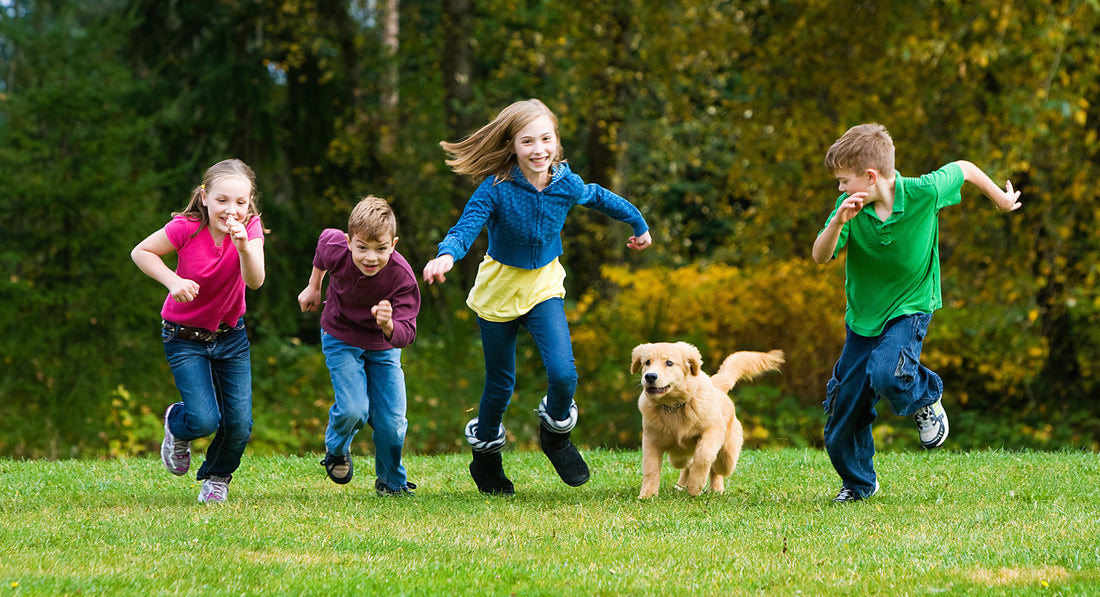
How To Keep Your Kids Safe When Playing With Dogs
Dogs and children are a wonderful combination when both the dog and the children are safe. Chances are, if you already have a family dog and children, you're well aware of the potential risks of things like dog bites, scratches, or worse. If you're bringing a new dog into the family or welcoming a new baby in into the family, then it's vital to understand what dog safety is and looks like.
When children and dogs mix, adult supervision is essential, especially when it comes to babies and small children who have no idea what safe playing looks like.
The Challenge Of School Holidays
School holidays present a unique situation for kid and dog safety. Parents out there are all too familiar with school holiday time and the extra hours your children will be spending in the home constantly searching for entertainment to fill their day. This can be challenging for already time-poor parents. Any routine is usually put out of whack, and the same goes for your dog!
The usual routine of your pooch having breakfast and a morning walk and relaxing most of the day while the kids are at school and parents are at work is very quickly turned upside down with kids constantly running around from one activity to the next, loud games, squabbling between siblings, and then you have your children's friends come over to play... it can all be a bit overwhelming sometimes compared to an otherwise quiet day at home for your dog.
We’ve listed some quick tips that may help when it comes to school holiday time to keep all children and pets feeling their most comfortable and happy.
Giving Your Dog Space From Your Own Children
Firstly, it’s important for your own children to know that even though they love Fido and he loves them, he needs his own space and time on occasion. Children shouldn’t be interrupting dogs when they’re sleeping or eating, chewing raw bones, or their favourite toy, especially unsupervised. Respect goes both ways with children and dogs and respecting each other's space is an invaluable lesson to teach your children. The same should go for any children that come into your dog's home.
Introducing Children Who Don’t Have A Dog Themselves
If your children are having friends over who haven’t visited before and don’t have a dog at home, it’s important to check with them and their parents first to find out if they are comfortable with dogs and their experience with them.
If they’re happy to visit, they need to be closely monitored on the first meeting and supervised throughout their visit whilst in the company of the dog. If you cannot supervise them, separate the dog from the children to a safe area.
If at any point, your dog or the child is uncomfortable or indicates a need for a break or space, it’s your job as the adult to stop the interaction immediately. Remember accidents can happen with even the most trusted furry family members and it is usually when an adult is not stepping in when needed and the dog feels the need to take matters into its own paws.
Reward Your Dog For Calm Behaviour
To encourage your dog to display calm behaviour, offer rewards when they are holding a sit or down position during greetings. If the visiting child is comfortable with your dog, you can let the child offer the reward, like a healthy dog treat, to build trust in the new relationship. If they are willing to offer a treat, doing so on a flat, outstretched hand is best. And, again, always supervise any interaction.
Following The Rules For Dog Safety
Once all introductions are complete, it's important to set some ground rules to keep everyone safe. This should be standard practice in any household with children and dogs anyway, but ensuring visiting children are aware also is paramount.
- Giving space (as said above) when required.
- Not interrupting sleep and food time.
- Do not pick up or attempt to pick up a small dog. If a cuddle is wanted, children should sit on the floor cross-legged and have the dog come sit with them, if the dog is comfortable to do so and be allowed to leave if feeling uncomfortable as so should the child.
- No teasing the dog. Remember there’s a difference between playing with the dog (when all parties are enjoying the game) vs teasing the dog (when only the children and enjoying the game).
- Let the new children know of any injuries/ailments the dog may have as these will be sore and or sensitive to touch and may cause a reaction from the dog.
- Supervise interactions at all times to ensure all parties are following the rules, are safe and happy.
These few tips will help to achieve a harmonious household with content children and dogs.
Children can have VERY special relationships with their dogs if built on the correct foundations. And it’s an even more beautiful thing to see your child share that relationship with their friends.
